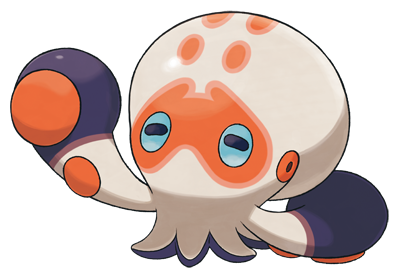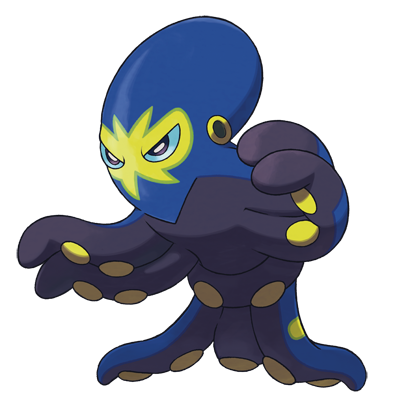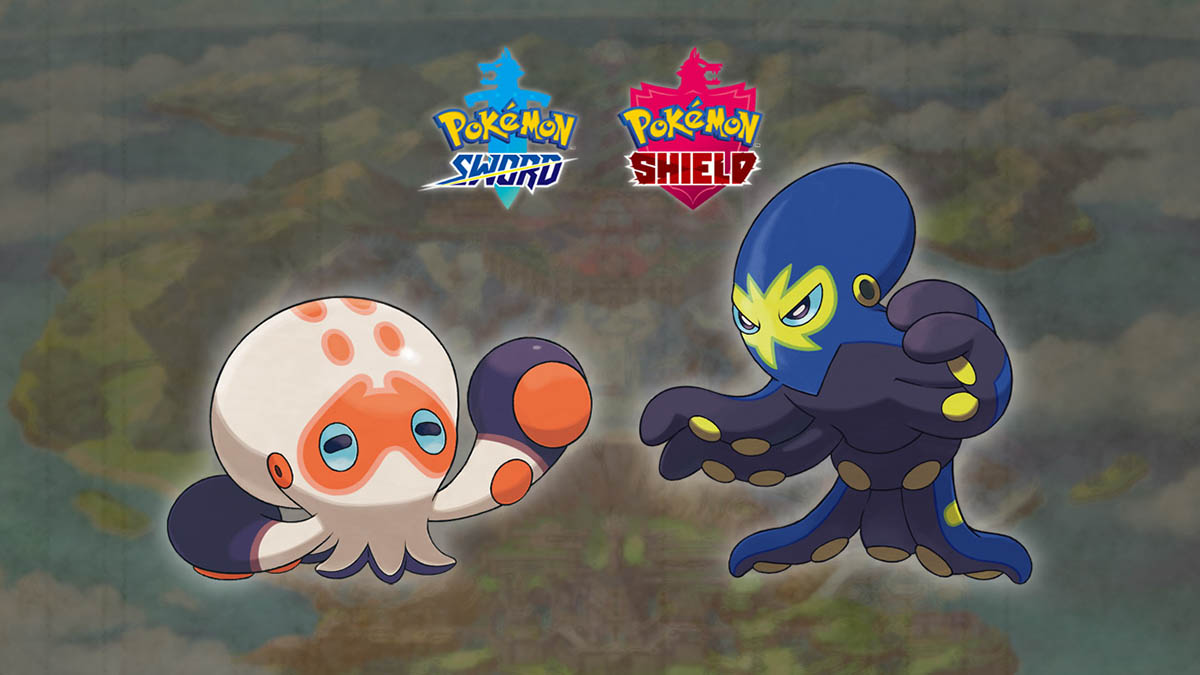In this recurring series, I’ll analyze the origins of Pokémon designs, their culture, and their historical allusions to British culture.
Clobbopus

Clobbopus is an aquatic Fighting-type Pokémon. Its name is a combination of “clobber” and “octopus”. It is based on an octopus, a type of cephalopod with eight distinct tentacles. Like others in the group, including squids and cuttlefish, they are known for having soft bodies and being able to regenerate lost limbs.
The curled octopus is commonly found in the waters around Great Britain. There they will hunt for crabs and small fish.
One characteristic of cephalopods is their intelligence. They have been shown to use tools, identify patterns, and solve problems.
Another characteristic is their assertive nature. While many hunt on their own, there have been instances where they’ll be accompanied by several fish species. Despite this, they are not highly cooperative. For various reasons they have been observed throwing their tentacles out to punch other fish. It is likely from this behavior that Clobbopus was designed. Perhaps that is why it is classified as the Tantrum Pokémon.
It’s very curious, but its means of investigating things is to try to punch them with its tentacles. The search for food is what brings it onto land.
Its tentacles tear off easily, but it isn’t alarmed when that happens—it knows they’ll grow back. It’s about as smart as a three-year-old.
Grapploct

Clobbopus evolves into Grapploct once it knows Taunt, which it can learn at level 35. Here, its body changes quite a bit. Its colors change to blue with yellow while it becomes better able to stand and use more tentacles in combat. It no longer has the punching bags of its predecessor but does have what resembles a wrestling mask on its face.
Its name, a combination of “grapple” and “octopus”, makes reference to its classification as the Jujitsu Pokémon. Jujutsu is a Japanese martial art which emphasizes close combat and grappling to subdue the opponent.
A body made up of nothing but muscle makes the grappling moves this Pokémon performs with its tentacles tremendously powerful.
Searching for an opponent to test its skills against, it emerges onto land. Once the battle is over, it returns to the sea.
This design may have some reference to the practice of octopus wrestling, a sporting event that became popular in the 1950s in the western United States. A diver would have to grapple with an octopus underwater and drag it to the surface in order to win. The activity eventually fell out of favor.
It is the only Pokémon that can learn the move Octolock. Not only does it trap the opponent but lowers their defenses every turn.
Conclusion
Clobbopus and Grapploct are one of the few aquatic Pokémon that are not Water-type. Their appearance and nature reflect our understanding of cephalopods and octopi in particular. While not the first octopus Pokémon in the series, they do stand out for these reasons.
Let us know what you think of this unique Pokémon line in the comments below or on Discord!

